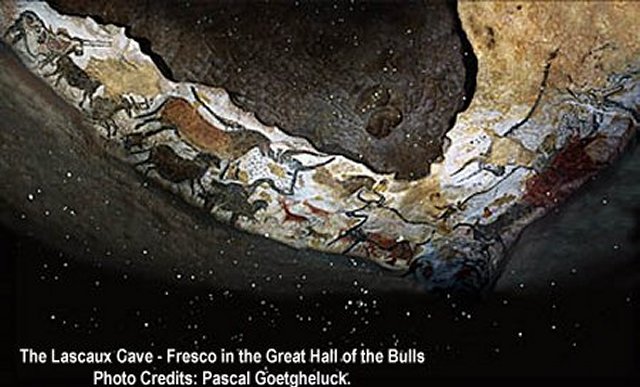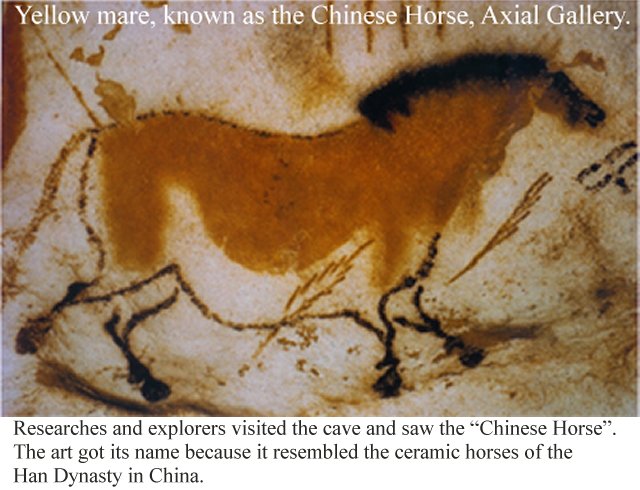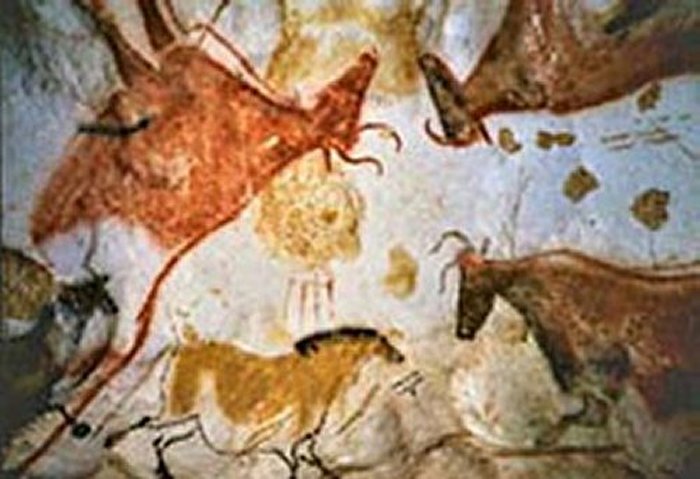Brilliant Prehistoric Cave Paintings Of Lascaux – Who Were Their Unknown Creators?
A.Sutherland - AncientPages.com - The identity of the masters of Lascaux, who possessed impressive knowledge of artistic technique and equally sophisticated knowledge, remains shrouded in mystery.
What source of light did they use? How did they protect their great work at Lascaux from atmospheric damage?
As the Italian journalist Loris Mannucci once wrote: "these works of art are 25,000 years old, yet they show such perfection in their design, color-scheme (especially red, yellow and black) and sense of movement as to upset many of our ideas concerning prehistoric man.
The paintings were made at different times, and it is a problem how these artists managed to construct a scaffolding to paint the roofs of caves that were several yards in height."
In the Lascaux Caverns, world-renowned for their Magdalenian paintings, one can still see the holes in the rock that supported wooden crossbeams. Probably looking similar to what Michelangelo utilized many millennia later, these crossbeams held scaffolding that enabled the Cro-Magnon artists to execute their works on the cave ceilings, ten to twelve feet above the cavern floor.
We do not know whether the Lascaux caves were a sanctuary or a dwelling place, but we can say with certainty that many people frequently used the place and the pictures at Lascaux managed to survive millennia.
Curiously, the last two to three decades of frequent tourist visitations at Lascaux have seriously damaged the beautiful wall paintings, and the cave's rocky interior has begun to disintegrate in many places.
A very long time ago, in prehistory, the Lascaux Cave, a deep and dark place, could be the humans' first center of observation of the sky.
A painted map of the prehistoric cosmos covers one of the walls of the Lascaux Cave in the vicinity of the Shaft of the Dead Man.
The Lascaux Cave, located on a hill at Dordogne, near Montignac, in southern France, is one and most known of over 350 ancient decorated sites.
It was discovered accidentally in September 1940 by a group of teenagers. It is a classified historic building which as one of the first sites, profited from a new method of dating: Carbon-14. There are more than 100 Paleolithic caves in the region.
According to German researcher Michael Rappenglueck of the University of Munich, a map depicting the eyes of the bull, birdman, and bird represents the three prominent stars Vega, Deneb, and Altair.
All three represents the so-called "Summer Triangle" composed of the brightest celestial objects in the sky during the middle of a northern summer.
Among other frescoes located near the cave entrance, there is an impressive painting of a bull. Hanging over its shoulder is a depiction of a map of the Pleiades, the cluster of stars sometimes called the Seven Sisters.
Inside the bull painting, there are also indications of spots that may represent other stars found in that region of the sky. Today, this region forms part of the constellation of Taurus the bull. The ancients, who lived thousands of years ago, were much more sophisticated than previously thought.
Was the Lascaux cave some ancient planetarium where stars were charted?
In recent years, new research has suggested that the Lascaux paintings may incorporate prehistoric star charts. Dr. Michael Rappenglueck of the University of Munich argued that some of the non-figurative dot clusters and dots within some of the figurative images correlate with the constellations of Taurus, The Pleiades, and the grouping known as the "Summer Triangle".
This impressive legacy left to us by the ancients consists of more than 1,800 figures of animals like horses, bison, wolves, mammoths, ibex, aurochs, deer, lions and bears, and many other abstract designs.
The original cave, a very fragile ancient place of 250 m long, was closed to the public in 1963 when a deteriorating fungus "attacked" its walls. Since 1983 people can visit Lascaux Cave's "reproduction".
The first hall of the system is the Great Hall of the Bulls. This large fresco, covering about 20 meters, depicts horses, bulls, and stags. After the Great Hall, there is about thirty meters long surface called the Painted Gallery, with the walls entirely covered with various figures. There is the Lateral Passage, a low corridor, where only a few paintings and engravings survived to the right of the Great Hall of the Bulls.

This corridor connects the Chamber of Engravings, a large round area with more than 600 hundred engraved figures, with the Main Gallery and the Chamber of Felines. The Shaft of the Dead Man, where no traces of any human were ever found, is set a little apart, at the far end of the Chamber of Engravings, and the Silted-up Chambers are in the same direction.
Brilliant prehistoric paintings of Lascaux, with their anatomically perfect details of all depicted animals, are rendered with great art skills like shadowing, highlighting, stenciling, and the use of perspective, a technique that was not rediscovered until the Golden Age in Greece.
However, looking at the millennia-old Paleolithic artwork of Lascaux, where only simple stick figures represent a man, we cannot tell if the artists were a Neanderthal man or Cro-Magnon man or perhaps someone else.
Written by – A. Sutherland - AncientPages.com Senior Staff Writer
Copyright © AncientPages.com All rights reserved. This material may not be published, broadcast, rewritten or redistributed in whole or part without the express written permission of AncientPages.com
More From Ancient Pages
-
 Modern Pesticide Accelerates Corrosion Of Ancient Roman Bowl
Archaeology | Oct 6, 2022
Modern Pesticide Accelerates Corrosion Of Ancient Roman Bowl
Archaeology | Oct 6, 2022 -
 Treasure Trove Of Assyrian Kings Found In Tunnels Excavated And Plundered By Terrorists
Archaeology | Apr 20, 2020
Treasure Trove Of Assyrian Kings Found In Tunnels Excavated And Plundered By Terrorists
Archaeology | Apr 20, 2020 -
 3,500-Year-Old Skull And Thighbone Discovered In Sapinuwa Antique City Of Central Anatolia
Archaeology | Dec 3, 2019
3,500-Year-Old Skull And Thighbone Discovered In Sapinuwa Antique City Of Central Anatolia
Archaeology | Dec 3, 2019 -
 ‘King Arthur’s Hall’ Is 4,000 Years Older Than Previously Thought
Archaeology | Nov 12, 2024
‘King Arthur’s Hall’ Is 4,000 Years Older Than Previously Thought
Archaeology | Nov 12, 2024 -
 Early Homo Sapiens From Southeast Asia Could Adapt To A Rainforest Environment
Archaeology | Oct 17, 2021
Early Homo Sapiens From Southeast Asia Could Adapt To A Rainforest Environment
Archaeology | Oct 17, 2021 -
 Locations Of 11 Lost Ancient Cities Revealed On 4,000-Year-Old Artifacts
Archaeology | Nov 15, 2017
Locations Of 11 Lost Ancient Cities Revealed On 4,000-Year-Old Artifacts
Archaeology | Nov 15, 2017 -
 Fresco Reveals Renaissance Genius Raphael Used Egyptian Blue – World’s Oldest Artificial Pigment
News | Sep 8, 2020
Fresco Reveals Renaissance Genius Raphael Used Egyptian Blue – World’s Oldest Artificial Pigment
News | Sep 8, 2020 -
 Beautiful Legend Of Maneki-neko – The Japanese Good Luck Charm Cat Raising A Paw
Featured Stories | Oct 10, 2021
Beautiful Legend Of Maneki-neko – The Japanese Good Luck Charm Cat Raising A Paw
Featured Stories | Oct 10, 2021 -
 Mary Boleyn – King Henry VIII’s Other Woman And Sister Of Anne Boleyn
Featured Stories | Jul 24, 2018
Mary Boleyn – King Henry VIII’s Other Woman And Sister Of Anne Boleyn
Featured Stories | Jul 24, 2018 -
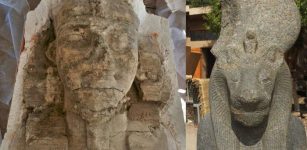 Two Giant Limestone Sphinxes Of Pharaoh Amenhotep III And A Statue Of Goddess Sekhmet Discovered In Luxor
Archaeology | Aug 11, 2022
Two Giant Limestone Sphinxes Of Pharaoh Amenhotep III And A Statue Of Goddess Sekhmet Discovered In Luxor
Archaeology | Aug 11, 2022 -
 What Was On The Menu For Stonehenge’s Builders, 2500 BC? Milk, Yoghurt And Cheese Only Eaten In Exclusive Ceremonies
Archaeology | Oct 14, 2015
What Was On The Menu For Stonehenge’s Builders, 2500 BC? Milk, Yoghurt And Cheese Only Eaten In Exclusive Ceremonies
Archaeology | Oct 14, 2015 -
 Oldest Door Lock Comes From Ancient Egypt
Ancient History Facts | Jun 27, 2018
Oldest Door Lock Comes From Ancient Egypt
Ancient History Facts | Jun 27, 2018 -
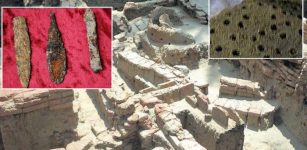 Keeladi, India: Ancient Residents Along Vaigai River Had Adopted Highly Progressive Technologies
Archaeology | Aug 28, 2020
Keeladi, India: Ancient Residents Along Vaigai River Had Adopted Highly Progressive Technologies
Archaeology | Aug 28, 2020 -
 Unexpected Discovery Of Viking Trading Place In Norway Re-Writes History
Archaeology | Jul 22, 2020
Unexpected Discovery Of Viking Trading Place In Norway Re-Writes History
Archaeology | Jul 22, 2020 -
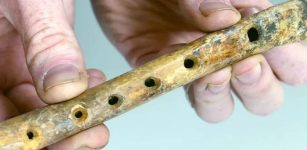 Rare, Well-Preserved Medieval Bone Flute Found In Kent
Archaeology | Nov 24, 2022
Rare, Well-Preserved Medieval Bone Flute Found In Kent
Archaeology | Nov 24, 2022 -
 On This Day In History: Dramatic Battle Of Öland – On June 1, 1676
News | Jun 1, 2016
On This Day In History: Dramatic Battle Of Öland – On June 1, 1676
News | Jun 1, 2016 -
 Ancient Scar Dragon Plaque And The Viking Boat To The Otherworld
Artifacts | Feb 4, 2016
Ancient Scar Dragon Plaque And The Viking Boat To The Otherworld
Artifacts | Feb 4, 2016 -
 When Did Humans Start Using Roads And What Civilization Built The First Paved Roads?
Archaeology | Oct 26, 2022
When Did Humans Start Using Roads And What Civilization Built The First Paved Roads?
Archaeology | Oct 26, 2022 -
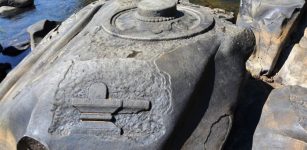 Mystery Of Ancient Carved Shiva Lingas In India And Cambodia
Featured Stories | Oct 12, 2015
Mystery Of Ancient Carved Shiva Lingas In India And Cambodia
Featured Stories | Oct 12, 2015 -
 Unique Viking Age Hearths Discovered In Tallinn, Estonia
Archaeology | May 11, 2022
Unique Viking Age Hearths Discovered In Tallinn, Estonia
Archaeology | May 11, 2022

